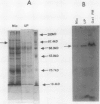Abstract
Plasma membrane ATPase has been proposed as a site of functional alteration during early stages of freezing injury. To test this, plasma membrane was purified from Solanum leaflets by a single step partitioning of microsomes in a dextran-polyethylene glycol two phase system. Addition of lysolecithin in the ATPase assay produced up to 10-fold increase in ATPase activity. ATPase activity was specific for ATP with a Km around 0.4 millimolar. Presence of the ATPase enzyme was identified by immunoblotting with oat ATPase antibodies. Using the phase partitioning method, plasma membrane was isolated from Solanum commersonii leaflets which had four different degrees of freezing damage, namely, slight (reversible), partial (partially reversible), substantial and total (irreversible). With slight (reversible) damage the plasma membrane ATPase specific activity increased 1.5- to 2-fold and its Km was decreased by about 3-fold, whereas the specific activity of cytochrome c reductase and cytochrome c oxidase in the microsomes were not different from the control. However, with substantial (lethal, irreversible) damage, there was a loss of membrane protein, decrease in plasma membrane ATPase specific activity and decrease in Km, while cytochrome c oxidase and cytochrome c reductase were unaffected. These results support the hypothesis that plasma membrane ATPase is altered by slight freeze-thaw stress.
Full text
PDF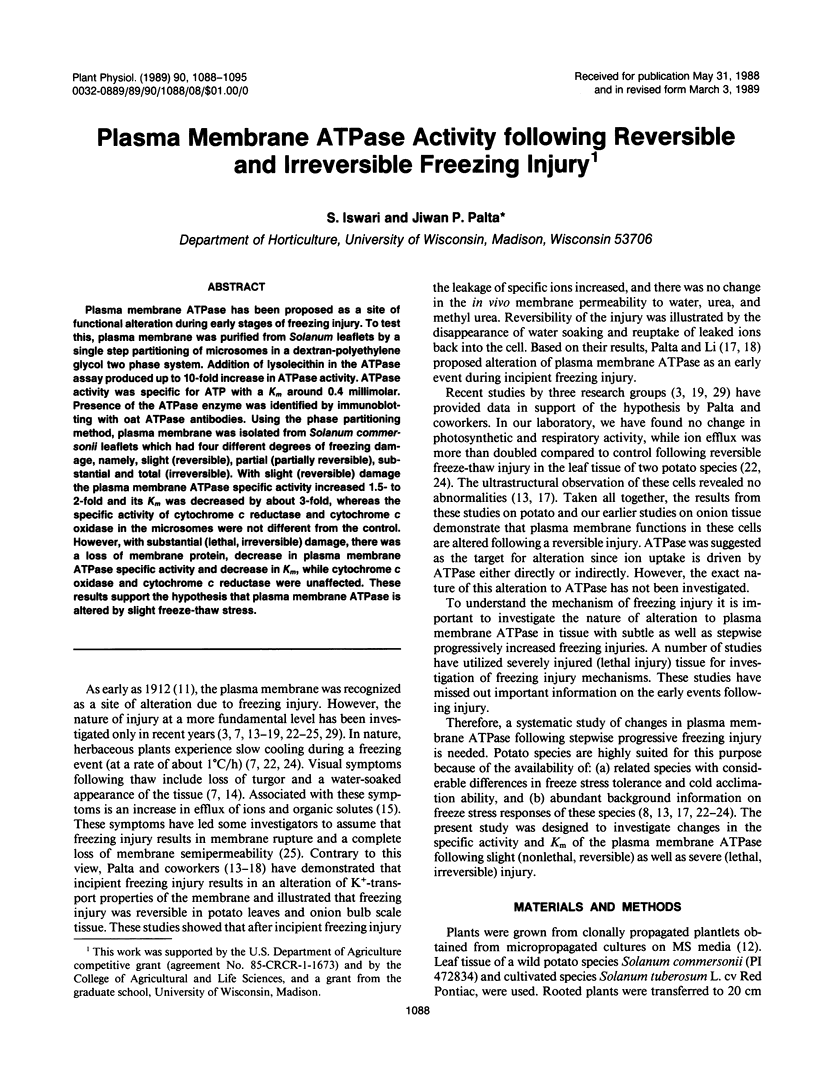
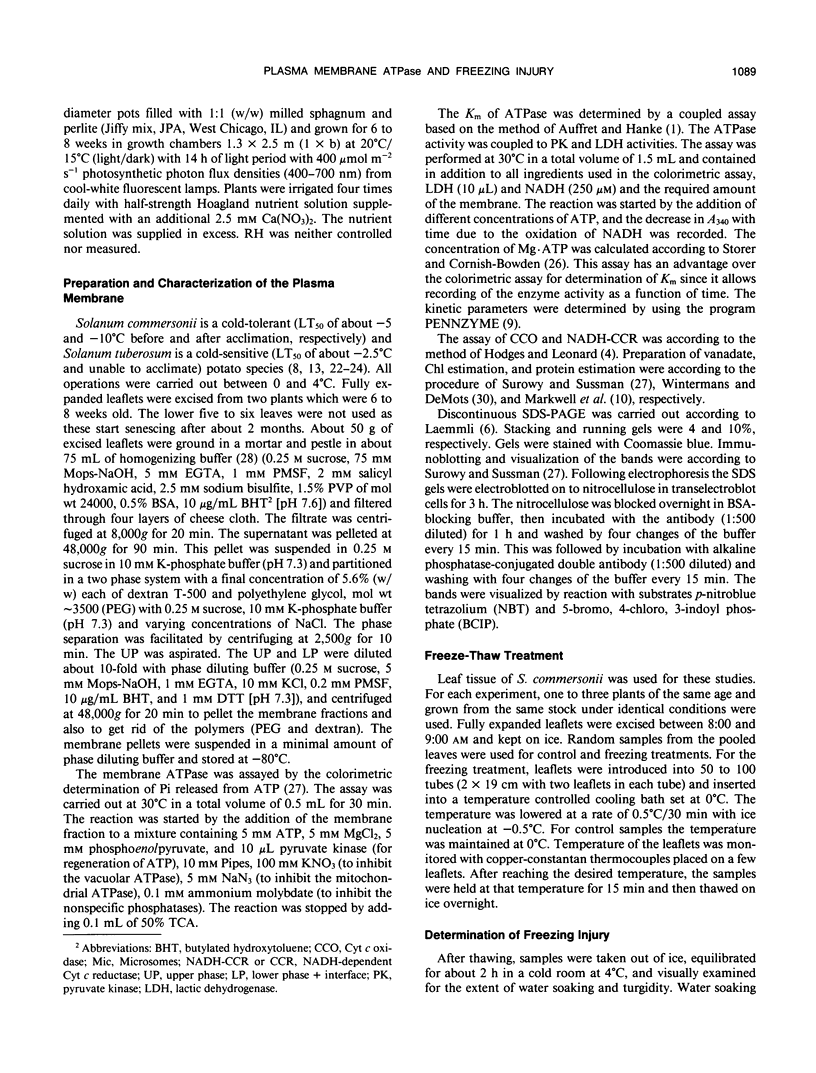
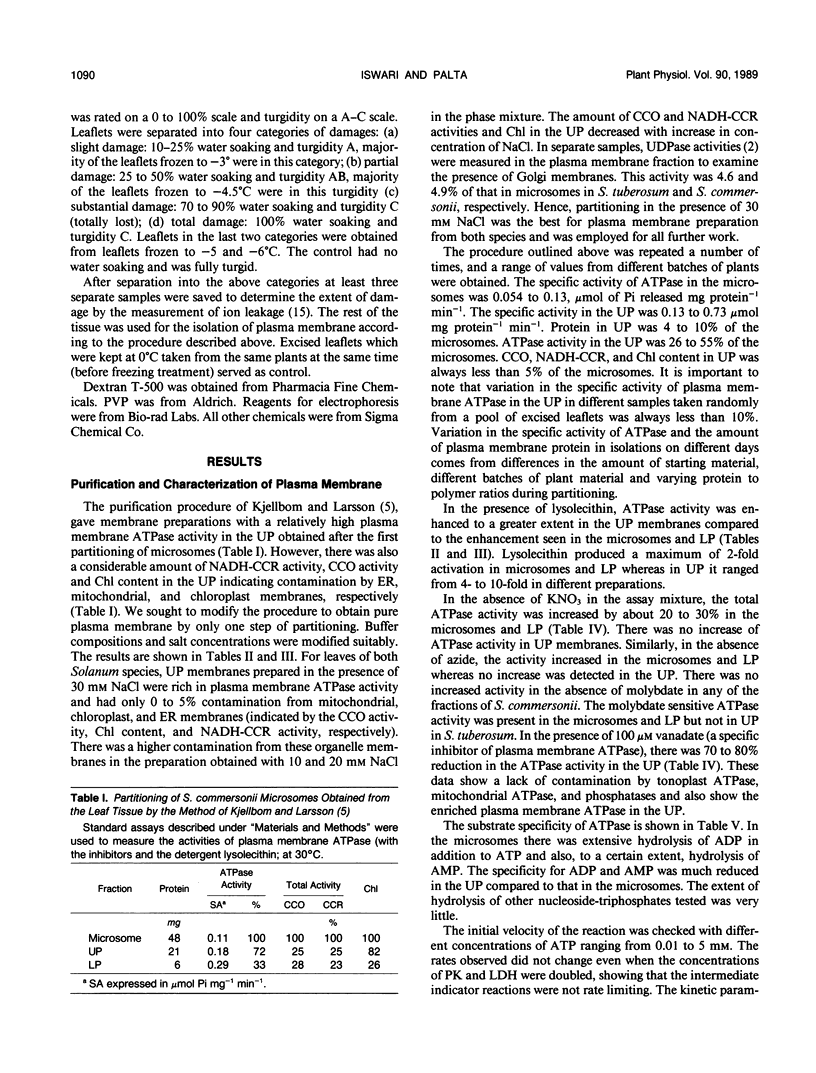
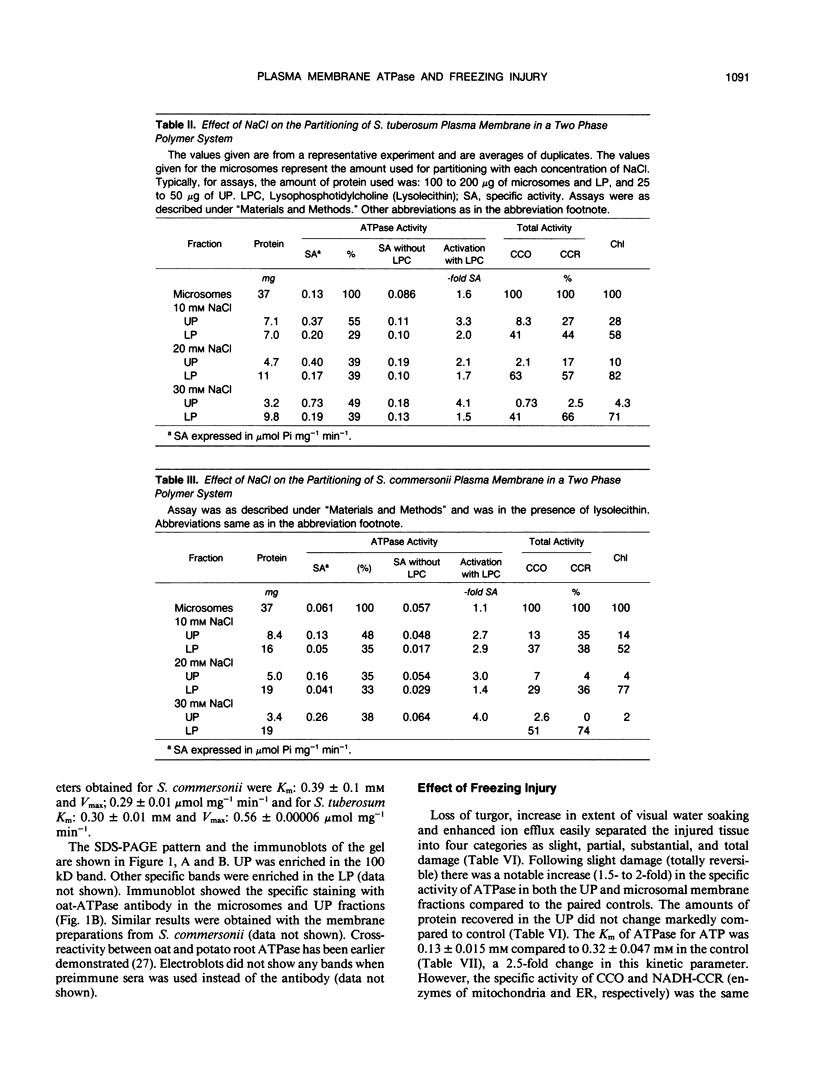
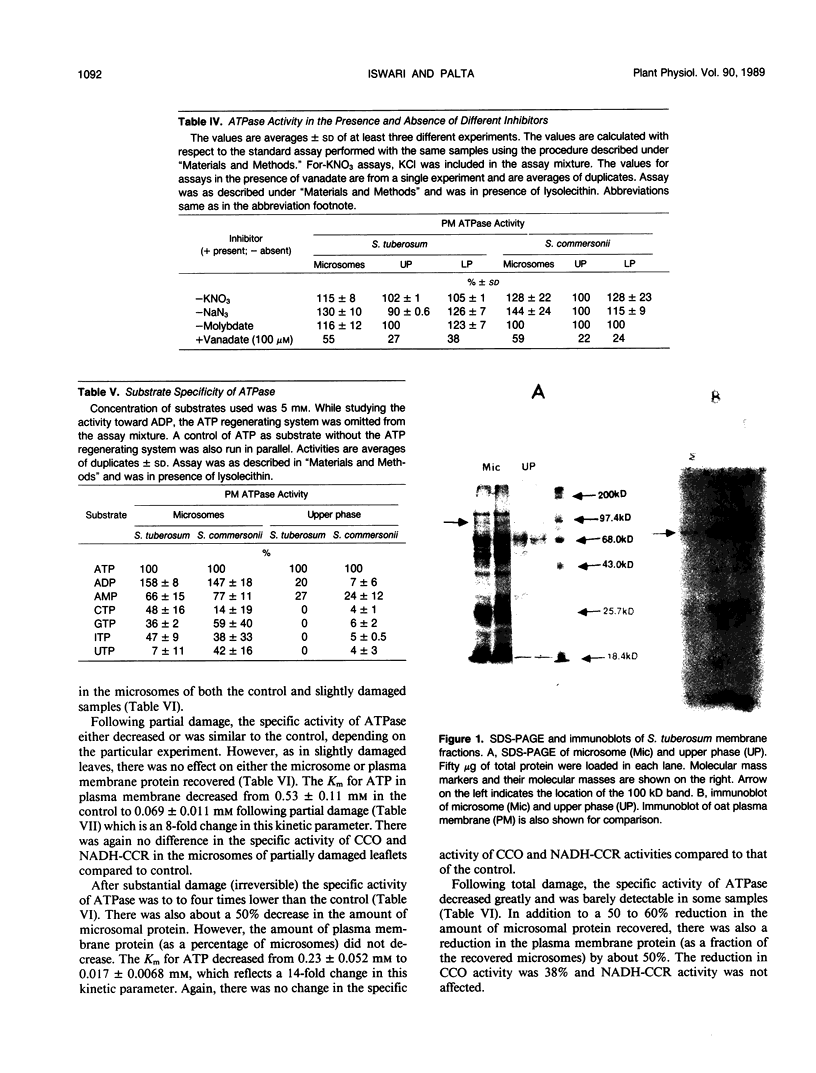
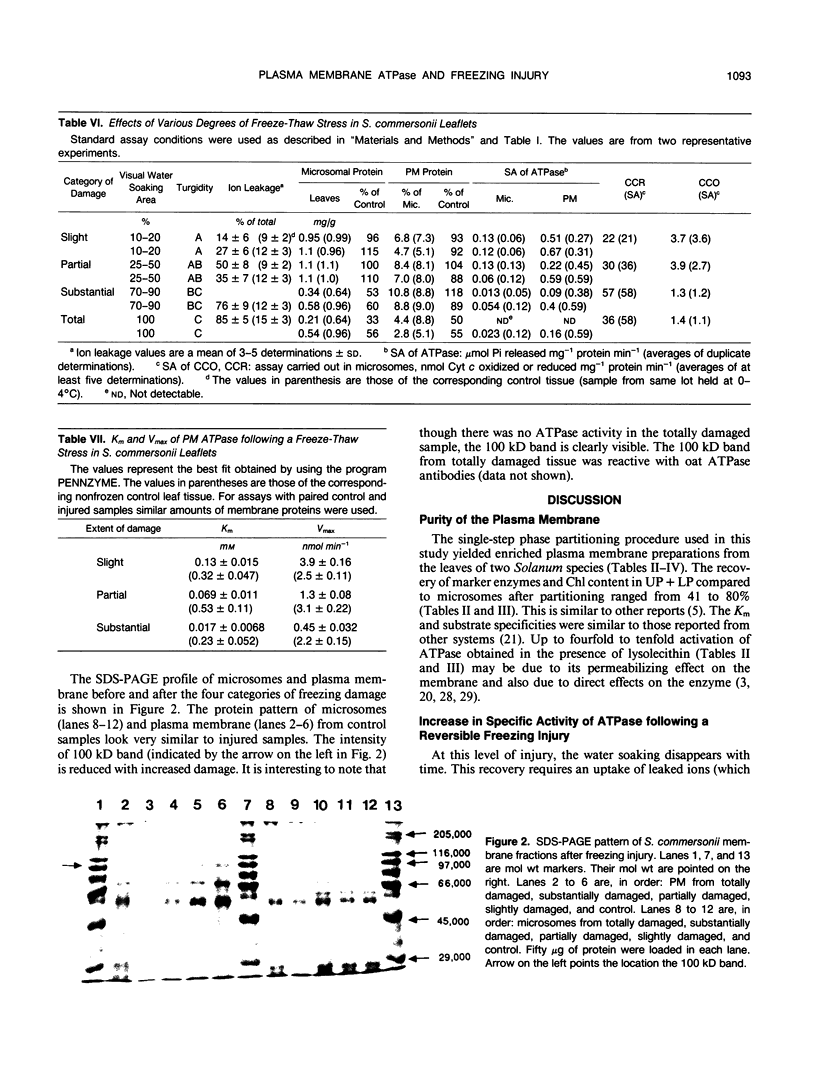
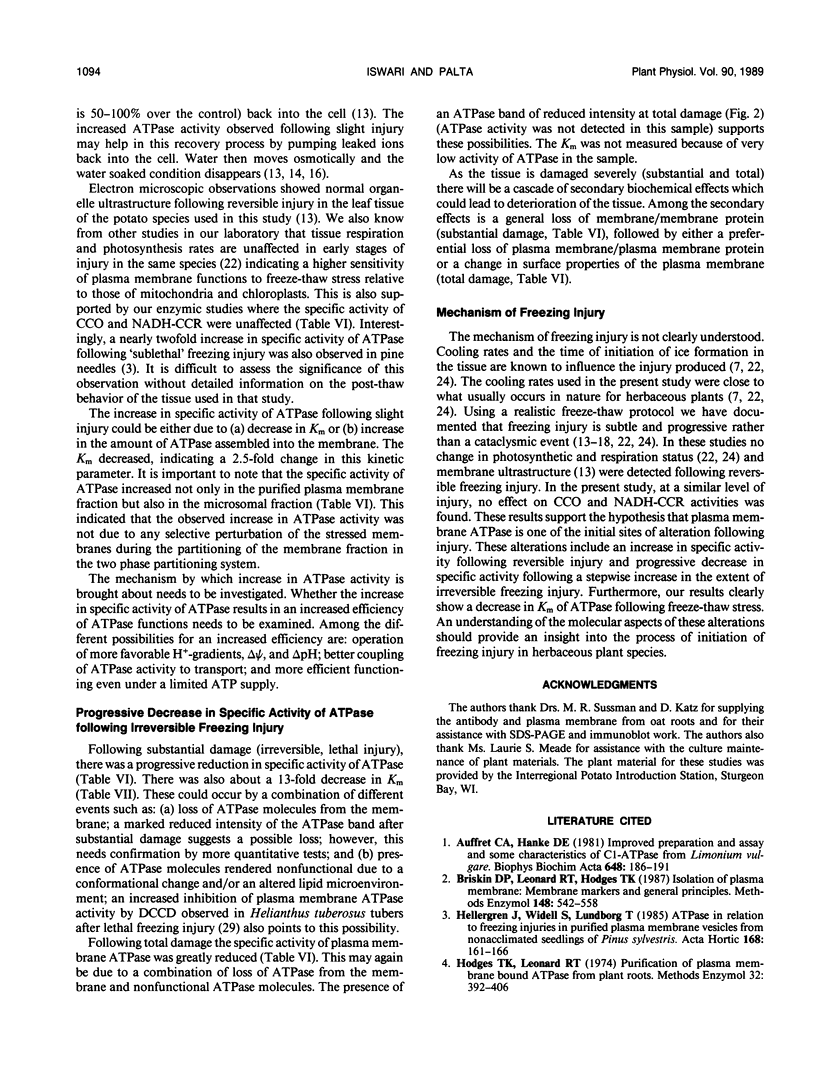
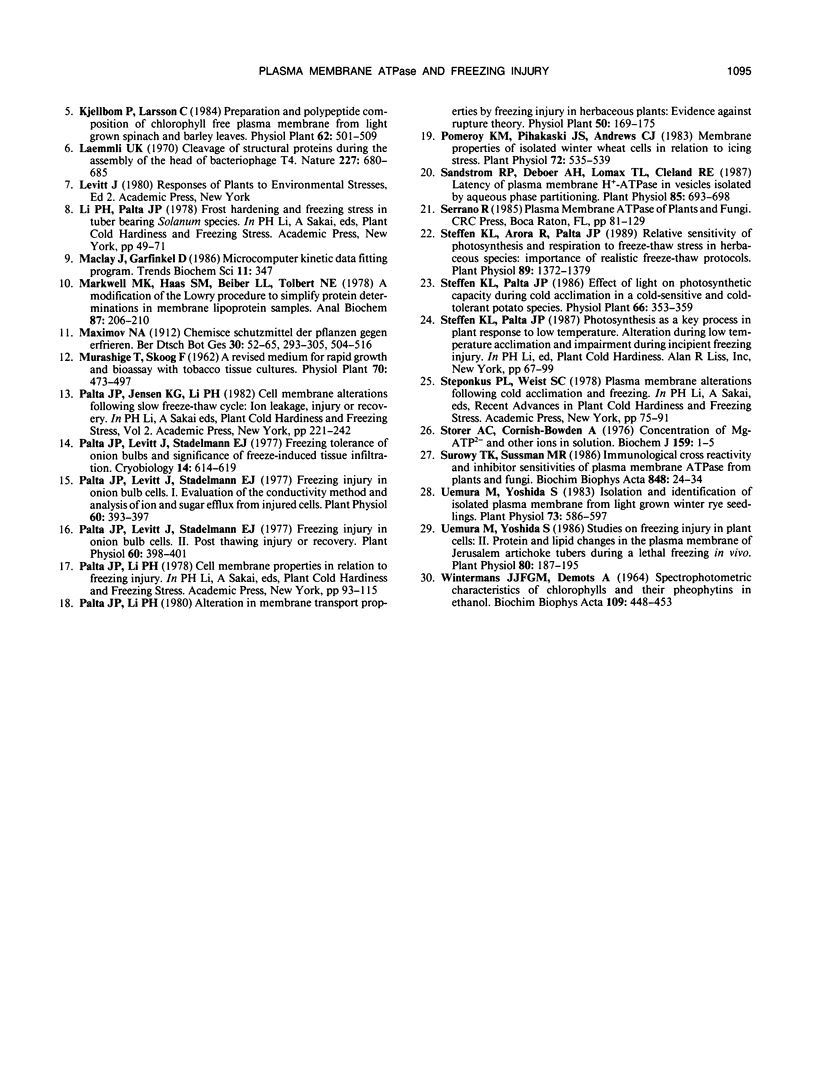
Images in this article
Selected References
These references are in PubMed. This may not be the complete list of references from this article.
- Auffret C. A., Hanke D. E. Improved preparation and assay and some characteristics of Cl--ATPase activity from Limonium vulgare. Biochim Biophys Acta. 1981 Nov 6;648(2):186–191. doi: 10.1016/0005-2736(81)90033-x. [DOI] [PubMed] [Google Scholar]
- Hodges T. K., Leonard R. T. Purification of a plasma membrane-bound adenosine triphosphatase from plant roots. Methods Enzymol. 1974;32:392–406. doi: 10.1016/0076-6879(74)32039-3. [DOI] [PubMed] [Google Scholar]
- Laemmli U. K. Cleavage of structural proteins during the assembly of the head of bacteriophage T4. Nature. 1970 Aug 15;227(5259):680–685. doi: 10.1038/227680a0. [DOI] [PubMed] [Google Scholar]
- Markwell M. A., Haas S. M., Bieber L. L., Tolbert N. E. A modification of the Lowry procedure to simplify protein determination in membrane and lipoprotein samples. Anal Biochem. 1978 Jun 15;87(1):206–210. doi: 10.1016/0003-2697(78)90586-9. [DOI] [PubMed] [Google Scholar]
- Palta J. P., Levitt J., Stadelmann E. J. Freezing Injury in Onion Bulb Cells: II. Post-thawing Injury or Recovery. Plant Physiol. 1977 Sep;60(3):398–401. doi: 10.1104/pp.60.3.398. [DOI] [PMC free article] [PubMed] [Google Scholar]
- Palta J. P., Levitt J., Stadelmann E. J. Freezing injury in onion bulb cells: I. Evaluation of the conductivity method and analysis of ion and sugar efflux from injured cells. Plant Physiol. 1977 Sep;60(3):393–397. doi: 10.1104/pp.60.3.393. [DOI] [PMC free article] [PubMed] [Google Scholar]
- Palta J. P., Levitt J., Stadelmann E. J. Freezing tolerance of onion bulbs and significance of freeze-induced tissue infiltration. Cryobiology. 1977 Oct;14(5):614–619. doi: 10.1016/0011-2240(77)90172-9. [DOI] [PubMed] [Google Scholar]
- Pomeroy M. K., Pihakaski S. J., Andrews C. J. Membrane properties of isolated winter wheat cells in relation to icing stress. Plant Physiol. 1983 Jun;72(2):535–539. doi: 10.1104/pp.72.2.535. [DOI] [PMC free article] [PubMed] [Google Scholar]
- Sandstrom R. P., Deboer A. H., Lomax T. L., Cleland R. E. Latency of Plasma Membrane H-ATPase in Vesicles Isolated by Aqueous Phase Partitioning : Increased substrate Accessibility or Enzyme Activation. Plant Physiol. 1987 Nov;85(3):693–698. doi: 10.1104/pp.85.3.693. [DOI] [PMC free article] [PubMed] [Google Scholar]
- Steffen K. L., Arora R., Palta J. P. Relative sensitivity of photosynthesis and respiration to freeze-thaw stress in herbaceous species : importance of realistic freeze-thaw protocols. Plant Physiol. 1989 Apr;89(4):1372–1379. doi: 10.1104/pp.89.4.1372. [DOI] [PMC free article] [PubMed] [Google Scholar]
- Storer A. C., Cornish-Bowden A. Concentration of MgATP2- and other ions in solution. Calculation of the true concentrations of species present in mixtures of associating ions. Biochem J. 1976 Oct 1;159(1):1–5. doi: 10.1042/bj1590001. [DOI] [PMC free article] [PubMed] [Google Scholar]
- Uemura M., Yoshida S. Isolation and Identification of Plasma Membrane from Light-Grown Winter Rye Seedlings (Secale cereale L. cv Puma). Plant Physiol. 1983 Nov;73(3):586–597. doi: 10.1104/pp.73.3.586. [DOI] [PMC free article] [PubMed] [Google Scholar]
- Uemura M., Yoshida S. Studies on Freezing Injury in Plant Cells : II. Protein and Lipid Changes in the Plasma Membranes of Jerusalem Artichoke Tubers during a Lethal Freezing in Vivo. Plant Physiol. 1986 Jan;80(1):187–195. doi: 10.1104/pp.80.1.187. [DOI] [PMC free article] [PubMed] [Google Scholar]
- Wintermans J. F., de Mots A. Spectrophotometric characteristics of chlorophylls a and b and their pheophytins in ethanol. Biochim Biophys Acta. 1965 Nov 29;109(2):448–453. doi: 10.1016/0926-6585(65)90170-6. [DOI] [PubMed] [Google Scholar]



